-
 bitcoin
bitcoin $123963.239194 USD
1.37% -
 ethereum
ethereum $4529.082464 USD
1.07% -
 xrp
xrp $2.983640 USD
0.71% -
 tether
tether $1.000287 USD
0.02% -
 bnb
bnb $1179.874393 USD
2.99% -
 solana
solana $230.633678 USD
1.55% -
 usd-coin
usd-coin $0.999835 USD
0.03% -
 dogecoin
dogecoin $0.254240 USD
1.34% -
 tron
tron $0.341176 USD
0.15% -
 cardano
cardano $0.842285 USD
0.52% -
 hyperliquid
hyperliquid $48.537896 USD
-0.86% -
 chainlink
chainlink $21.863092 USD
-0.84% -
 ethena-usde
ethena-usde $0.999743 USD
-0.07% -
 sui
sui $3.579561 USD
-0.18% -
 stellar
stellar $0.403418 USD
2.67%
What is DeFi's FATF policy?
FATF's guidelines define DeFi platforms as VASPs, requiring them to implement customer due diligence, transaction monitoring, and suspicious activity reporting measures to combat money laundering and terrorism financing.
Feb 17, 2025 at 08:06 am
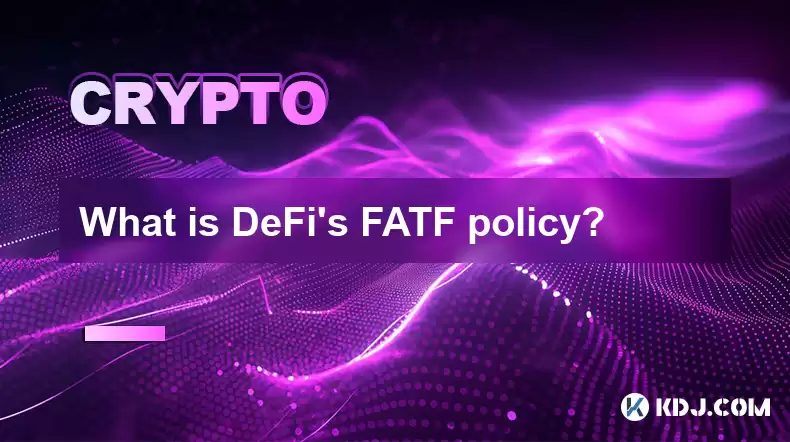
DeFi's FATF Policy: A Comprehensive Guide
Key Points:
- FATF's Definition of Virtual Assets and VASPs
- FATF's Recommendations for DeFi Platforms
- FATF's Travel Rule and its Implementation in DeFi
- The Impact of FATF's Policy on DeFi Adoption
- FAQs about DeFi's FATF Policy
FATF's Definition of Virtual Assets and VASPs
The Financial Action Task Force (FATF) is an intergovernmental organization that sets standards for combating money laundering and terrorist financing. In 2019, FATF issued a guidance paper defining virtual assets and virtual asset service providers (VASPs).
Virtual assets: Digital representations of value that can be transferred and stored electronically, and that are not legal tender. This includes cryptocurrencies, stablecoins, and security tokens.
VASPs: Entities that provide services related to virtual assets, such as exchanges, custodians, and payment processors.
FATF's definition of VASPs is broad and includes a wide range of entities, including DeFi platforms.
FATF's Recommendations for DeFi Platforms
FATF has issued several recommendations for DeFi platforms to mitigate money laundering and terrorist financing risks. These recommendations include:
- Implementing customer due diligence (CDD) procedures to verify the identity of users.
- Establishing transaction monitoring systems to detect suspicious activity.
- Reporting suspicious transactions to law enforcement.
- Cooperating with law enforcement and regulatory authorities in investigations.
FATF's recommendations are based on the principles of risk-based approach and proportionality. This means that DeFi platforms should implement measures that are commensurate with the risks they face.
FATF's Travel Rule and its Implementation in DeFi
The Travel Rule is a FATF recommendation that requires VASPs to collect and share information on the origin and destination of virtual asset transfers. This information includes the sender and recipient's name, address, and account number.
The Travel Rule is designed to prevent the use of virtual assets for money laundering and terrorist financing. It is currently being implemented by VASPs around the world, including DeFi platforms.
There are a number of challenges to implementing the Travel Rule in DeFi. One challenge is the lack of a centralized authority to collect and share information. Another challenge is the privacy concerns of DeFi users.
Despite these challenges, FATF is working with DeFi platforms to develop solutions that will allow for the effective implementation of the Travel Rule.
The Impact of FATF's Policy on DeFi Adoption
FATF's policy on DeFi is likely to have a significant impact on the adoption of DeFi. By increasing the regulatory requirements for DeFi platforms, FATF may make it more difficult for DeFi to operate.
However, FATF's policy may also help to legitimize DeFi and make it more attractive to institutional investors. By providing a clear regulatory framework, FATF can help to reduce uncertainty and risk for investors.
The ultimate impact of FATF's policy on DeFi adoption remains to be seen. However, it is clear that FATF is taking a proactive approach to regulating DeFi and that its policy will have a significant impact on the future of the industry.
FAQs about DeFi's FATF Policy
What is the FATF definition of virtual assets?Virtual assets are digital representations of value that can be transferred and stored electronically, and that are not legal tender.
What are VASPs?VASPs are entities that provide services related to virtual assets, such as exchanges, custodians, and payment processors.
What are FATF's recommendations for DeFi platforms?FATF's recommendations include implementing customer due diligence (CDD) procedures, establishing transaction monitoring systems, and reporting suspicious transactions to law enforcement.
What is the FATF Travel Rule?The Travel Rule requires VASPs to collect and share information on the origin and destination of virtual asset transfers.
How is the FATF Travel Rule being implemented in DeFi?DeFi platforms are working with FATF to develop solutions that will allow for the effective implementation of the Travel Rule.
What is the impact of FATF's policy on DeFi adoption?FATF's policy is likely to have a significant impact on DeFi adoption. By increasing the regulatory requirements for DeFi platforms, FATF may make it more difficult for DeFi to operate. However, FATF's policy may also help to legitimize DeFi and make it more attractive to institutional investors.
Disclaimer:info@kdj.com
The information provided is not trading advice. kdj.com does not assume any responsibility for any investments made based on the information provided in this article. Cryptocurrencies are highly volatile and it is highly recommended that you invest with caution after thorough research!
If you believe that the content used on this website infringes your copyright, please contact us immediately (info@kdj.com) and we will delete it promptly.
- BlockDAG, DOGE, HYPE Sponsorship: Crypto Trends Shaping 2025
- 2025-10-01 00:25:13
- Deutsche Börse and Circle: A StableCoin Adoption Powerhouse in Europe
- 2025-10-01 00:25:13
- BlockDAG's Presale Buzz: Is It the Crypto to Watch in October 2025?
- 2025-10-01 00:30:13
- Bitcoin, Crypto, and IQ: When Genius Meets Digital Gold?
- 2025-10-01 00:30:13
- Stablecoins, American Innovation, and Wallet Tokens: The Next Frontier
- 2025-10-01 00:35:12
- NBU, Coins, and Crypto in Ukraine: A New Yorker's Take
- 2025-10-01 00:45:14
Related knowledge

How to track DeFi activity on a block explorer
Sep 04,2025 at 05:36pm
Bitcoin's Role in Decentralized Finance1. Bitcoin remains the cornerstone of the cryptocurrency ecosystem, serving as both a store of value and a benc...
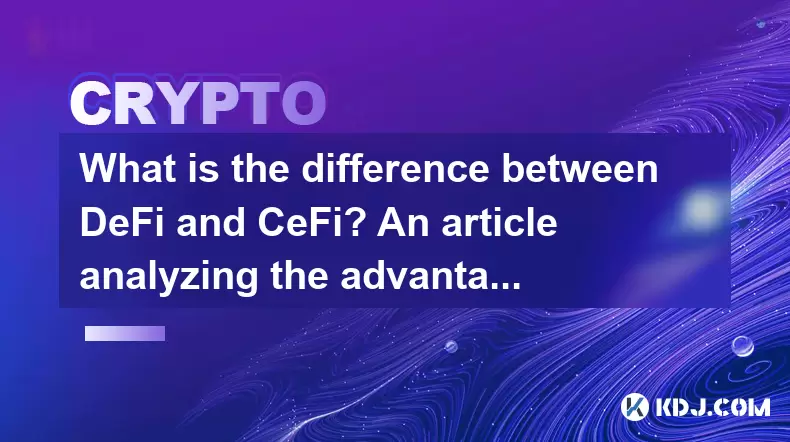
What is the difference between DeFi and CeFi? An article analyzing the advantages and disadvantages of both
Jun 13,2025 at 03:57am
Understanding the Foundations of DeFi and CeFiTo fully grasp the difference between DeFi (Decentralized Finance) and CeFi (Centralized Finance), it’s ...
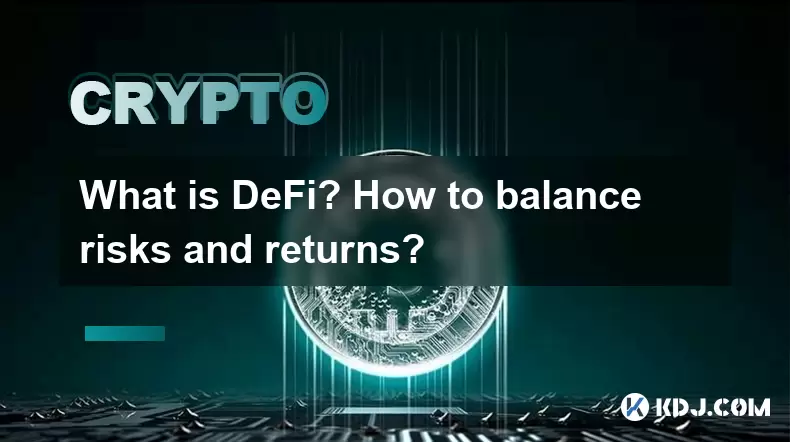
What is DeFi? How to balance risks and returns?
May 31,2025 at 12:22pm
What is DeFi? How to Balance Risks and Returns? Decentralized Finance, commonly known as DeFi, represents a revolutionary shift in the financial ecosy...
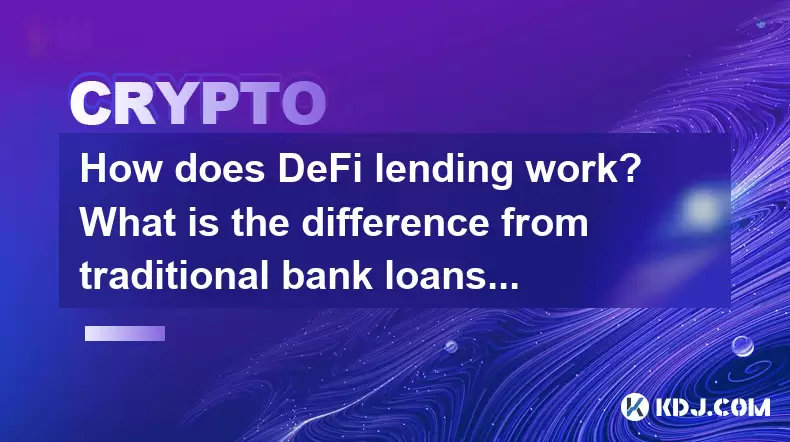
How does DeFi lending work? What is the difference from traditional bank loans?
May 29,2025 at 05:36pm
Introduction to DeFi LendingDeFi lending, or decentralized finance lending, represents a revolutionary shift in the way borrowing and lending are cond...
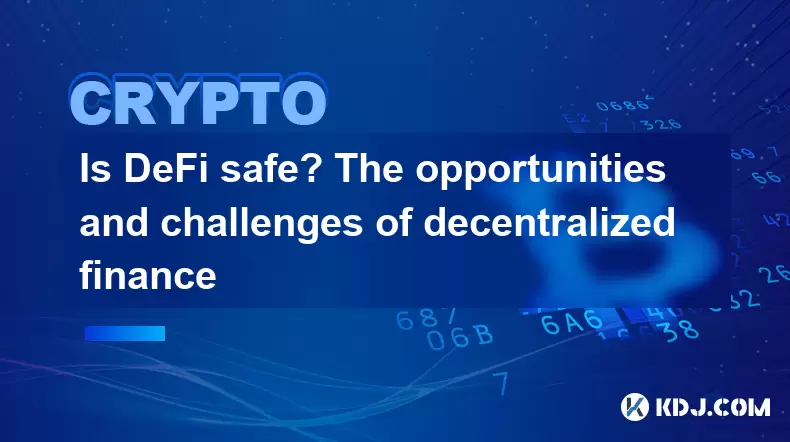
Is DeFi safe? The opportunities and challenges of decentralized finance
May 27,2025 at 02:28pm
Decentralized Finance, commonly known as DeFi, has revolutionized the financial landscape by offering a range of financial services without the need f...
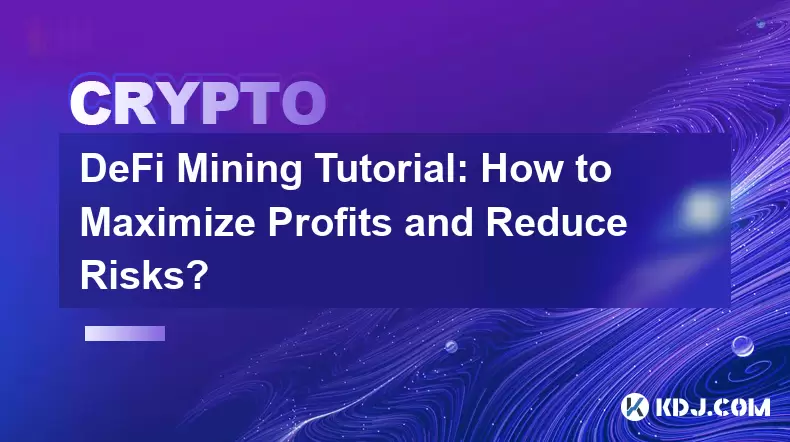
DeFi Mining Tutorial: How to Maximize Profits and Reduce Risks?
May 27,2025 at 07:42am
DeFi, or Decentralized Finance, has opened up a new world of opportunities for crypto enthusiasts looking to maximize their profits through various mi...

How to track DeFi activity on a block explorer
Sep 04,2025 at 05:36pm
Bitcoin's Role in Decentralized Finance1. Bitcoin remains the cornerstone of the cryptocurrency ecosystem, serving as both a store of value and a benc...

What is the difference between DeFi and CeFi? An article analyzing the advantages and disadvantages of both
Jun 13,2025 at 03:57am
Understanding the Foundations of DeFi and CeFiTo fully grasp the difference between DeFi (Decentralized Finance) and CeFi (Centralized Finance), it’s ...

What is DeFi? How to balance risks and returns?
May 31,2025 at 12:22pm
What is DeFi? How to Balance Risks and Returns? Decentralized Finance, commonly known as DeFi, represents a revolutionary shift in the financial ecosy...

How does DeFi lending work? What is the difference from traditional bank loans?
May 29,2025 at 05:36pm
Introduction to DeFi LendingDeFi lending, or decentralized finance lending, represents a revolutionary shift in the way borrowing and lending are cond...

Is DeFi safe? The opportunities and challenges of decentralized finance
May 27,2025 at 02:28pm
Decentralized Finance, commonly known as DeFi, has revolutionized the financial landscape by offering a range of financial services without the need f...

DeFi Mining Tutorial: How to Maximize Profits and Reduce Risks?
May 27,2025 at 07:42am
DeFi, or Decentralized Finance, has opened up a new world of opportunities for crypto enthusiasts looking to maximize their profits through various mi...
See all articles










































































